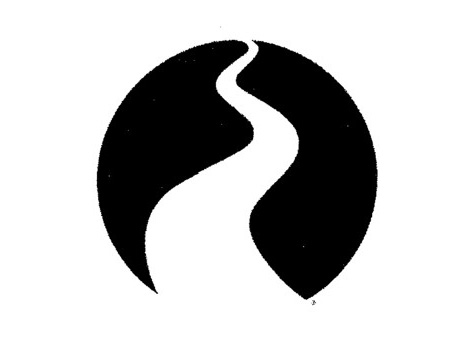The starting point for optimal living is the realisation that on all levels and in all dimensions, there is the field. We cannot say what the field is. At one level, the level of observation, it might be seen as a dense electromagnetic totality, but at another level, beyond the scope of our observation, it may be entirely different.
Apart from this objective unknowability, we cannot know what the field is because we are of that field. Our knowing itself is what the field generates. We may call it ‘one’, but that is only an idea on the level of human consciousness, which is in itself again of the field.
Then the question comes up: “What about us?”
“How do we relate to the field?”, “How is it relevant for us?”
The field being all that is, we are of the field; we are not on our own. We are not somebody who can step aside and look at the field. Our being in all of its aspects, is constituted by the field. At best we could say that there is only the field and our living is sharing in the field.
When we may wonder what is the best way to live, quite logically the answer could only be by optimally being what we are as being generated in the field.
On the other hand it seems quite obvious that we are individual beings, separated from each other and separated from the world as the actors are separated from the stage. It seems natural that our environment and the circumstances of our living are happening to us. With this notion we create a kind of separation that is counter to the observed reality that the dimensions of our being share in the relevant dimensions of the field.
Logically we can understand that as there is only the field, and everything is of that field, all notion of separation is an illusion. When however it comes to ordinary day to day situations, it is very difficult not to fall for this illusion.
Solving this tension between the obvious seamless same-ness of the field and the notion of separation that life imposes on us, is so fundamental that overcoming it can be considered as the principal Task of Human living.
For solving this tension, which is quite natural, we have to look at ourselves from a phenomenological perspective. Then we can see that this ‘I/World’ that we are, this interrelating whole of a ‘sense of I’ and a ‘sense of world’, consists in an amalgamation of dimensions that by interrelating transform resonance.
We can see that impressions of a temporary nature from sense perception and consciousness are transformed into resonance of a nature that is not subject to time but that is rooted in a timeless duration. This is called Memory.
Memory, which like everything of us, is not something that is in us. It consists in a sharing of a lasting resonance, so much even that you can say that the Memory that you have formed by means of living determines living, it determines dying, and it determines post-living in whatever state this may last.
When we go back to the Task of Human Living we can deduct that for performing this task optimally we should create such Memory by means of living that what is lasting of us is as best as possible in Attunement with our nature as sharing in the field.
It is an ancient observation that demonstrates that the degree of Attunement that is reached in Memory, and therefore in what we are as the Habitual Programmes of Perception that are engendered by Memory, can be measured by the degree of Certainty that emerges.
This is not the certainty of ratiocinations. Nothing is ever certain. Such certainty is always by nature temporary and susceptible to doubt. The Certainty that emerges from Attunement is unconditional.
The above realisation may be clear, but it does not help us with how to deal with the practical aspects of life. For this there are the Four A’s of Nâm.
The first A is Affirmation
Affirmation expresses a peaceful acknowledgement that ‘what is’ is ‘what is’ as it is ‘what is’. This somewhat cryptic formulation is necessary because just accepting what is as what is may lead to fundamentalist illusions. ‘What is’ appears to me as ‘what is’ but it may appear very different as ‘what is’ to somebody else.
Such peaceful acknowledgement cannot be feigned. It is not naturally there, it needs to grow.
Stressing and Remembering the Affirmation is a powerful instrument with which the above mentioned Certainty can be generated.
A peaceful acknowledgement does not mean a lethargic passive attitude of accepting everything. The interplay with the other three A’s of Nâm ensures a continuing active involvement that is rooted in the fundamental Affirmation.
The second A is Abbah
We are of the field, but even the thought of ‘field’ is too human. It is an idea of the human mind. The field is beyond human, beyond the universe, beyond anything macro and micro. In order to be able to keep it in mind and to allow us to Remember it as much as possible, I link the field to the sound ABBAH.
Abbah is not the name of the field, nor does it describe the field, it is just a sound that when it is used indicates what I am referring to. Abbah as a sound has a psychological impact and the nature of the sound allows it to be linked both to impressions of infinity and of intimacy.
The third A is Asha
Because there is only Abbah and because the field is infinitely everything, what we witness as ‘I/World’ is always Abbah. It is however the nature of human living that this is not directly obvious. We are naturally driven to the notion of separation. We can say that we are born in a cloud of Ignorance. It is an Ignorance that for many people remains for their whole lives. Some however realise the Task of Human Living and they aim at Wisdom that emerges automatically when the cloud is dissolved.
In order to deal better with the fact that there is only Abbah but there appears to be also an ‘other than Abbah’, Abbah as we are able to perceive it is called Asha. Asha is as Abbah may appear to us in the same way as in which you can recognise somebody by the face, while that somebody is much more than the face, both physically and as a representation of resonance, which the face doesn’t necessarily demonstrate.
The fourth A is Attitude
Ideas and even skilful means like Affirmation, Abbah and Asha do not lead to the performance of the Task of Human Living, which as we have seen can be characterised as removing the veil of Ignorance in order for Wisdom to appear. This Wisdom is not a kind of elevated knowing, it is rather becoming what you are as an expression of Abbah. Wisdom is not something what you have but rather a quality that you are.
This can only be generated by dealing in such a way with the environment and the circumstances of living that optimal beneficial Memory is created.
From a human perspective we can consider ‘what is’ as resonance. We share in ranges of resonance with the amalgamation that we are as ‘I/World’. The kind of management we execute with ‘I/ World’ determines the kind of Memory resonance. This is determined by the Attitudes and Behaviour that we cultivate. Attitude refers to beneficial Attitudes and Behaviour.
There are Attitudes and Behaviour that are universally recognised as detrimental such as killing for instance and exploiting others. Some kinds of Attitude are very personal. Attitude should not be considered as related to a set of commandments, rules or legislation. Whether Attitudes and Behaviour are beneficial depends entirely on the way they are connected to the serious endeavour to dispel Ignorance.
It is obvious that as all is one in Abbah, Attitude is social. It relates to other people, to animals, plants and the environment as a whole. Therefore the best guidance for Attitude is to bring it in accordance with Loving-Kindness, Service and Respect. In this sense the ancient Golden Rule, not doing to others what you would not want others to do to you, is a good guide.
The Four A’s of Nâm is the source of natural ethics. There is an overall regularity in which there is an ongoing relationship between Cause and Consequence. Every situation is a Consequence of Causes, and every Consequence is a new Cause. With the help of the Four A’s of Nâm you can manage yourself as the Cause of what you want to become. In this sense Abbah is interactive.
The spiritual endeavour consists in optimal using the Four A’s of Nâm. Attitude and evolving Wisdom may guide towards optimal ethics that support the spiritual endeavour both individually as well as collectively.
Once you have reached a sufficient degree of Attunement in Abbah you are without consciously realising it a Carrier of Nâm. This quality may for some lead to the quality of a beautiful human being who as a Carrier of Nâm literally activates the expression of ‘my hands are your hands and my feet are your feet.’
27 February 2023



